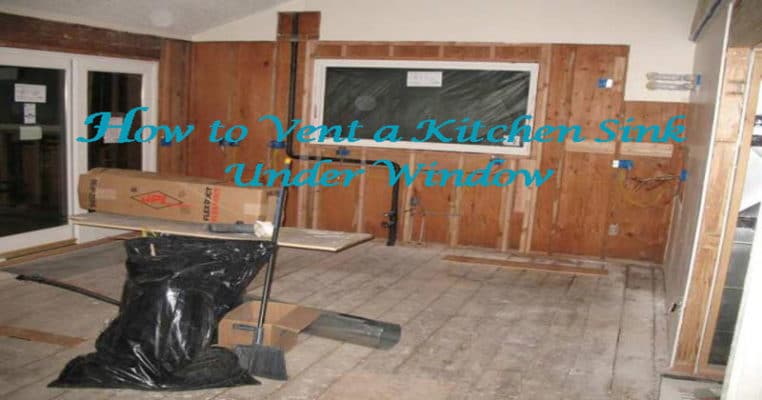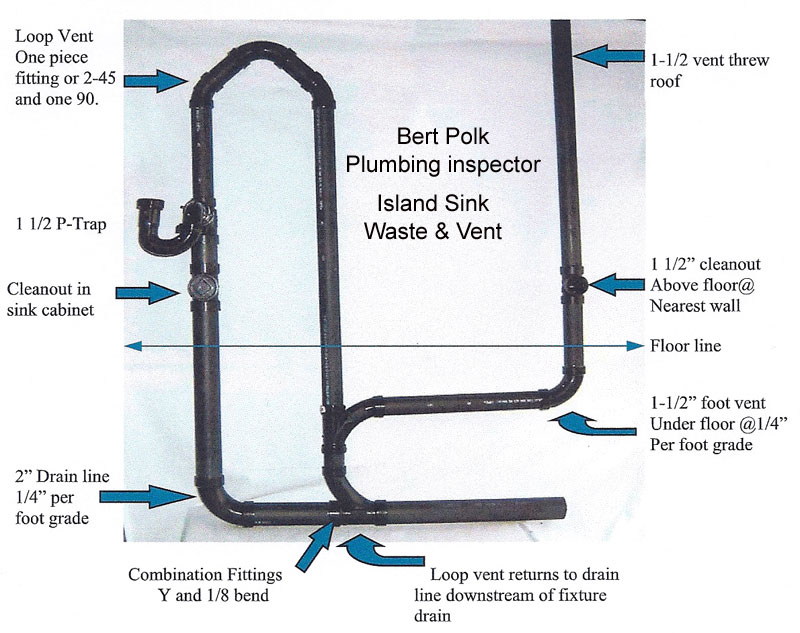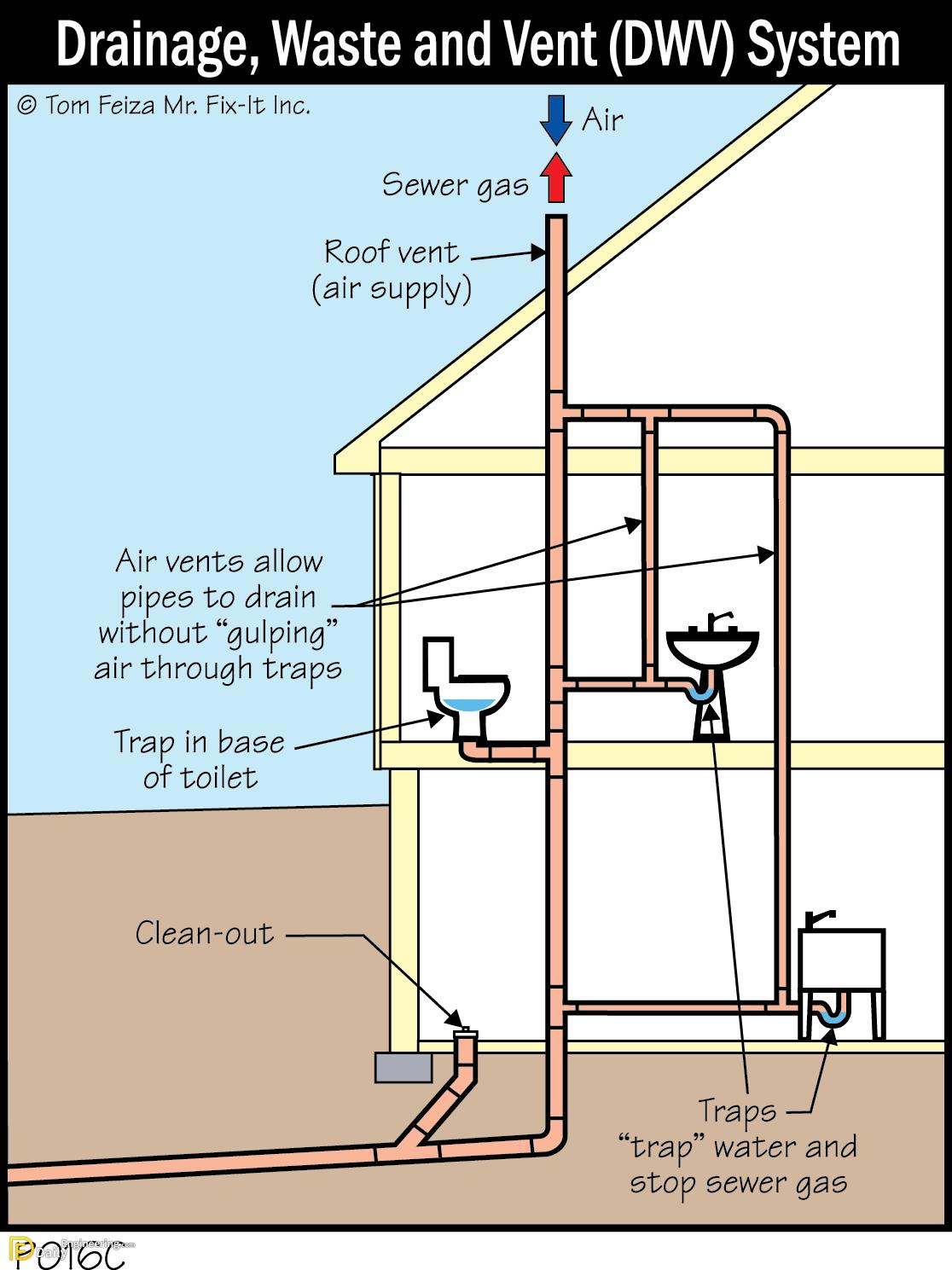1. Venting a Kitchen Sink Under a Window: What You Need to Know
When designing or remodeling a kitchen, one important factor to consider is the placement of the sink. Many homeowners choose to have their kitchen sink installed under a window for aesthetic and functional purposes. However, this can present a challenge when it comes to venting the sink properly. In this article, we will discuss everything you need to know about venting a kitchen sink under a window.
2. How to Properly Vent a Kitchen Sink Under a Window
Venting a kitchen sink under a window is crucial for maintaining proper drainage and preventing unpleasant odors from seeping into your home. The first step in this process is to determine the location of the vent. It should be placed as close to the sink as possible, and ideally, within 5 feet of the drain. This will ensure that the vent effectively removes any gases or odors from the drain.
3. The Benefits of Venting a Kitchen Sink Under a Window
Properly venting a kitchen sink under a window has several benefits. Firstly, it prevents the formation of a vacuum in the plumbing system, which can cause slow draining or gurgling noises. It also helps to eliminate any unpleasant odors that may arise from the drain. Additionally, venting the sink can prevent the build-up of harmful bacteria and mold, which can thrive in a poorly ventilated system.
4. Common Mistakes to Avoid When Venting a Kitchen Sink Under a Window
One of the most common mistakes when venting a kitchen sink under a window is improper placement of the vent. As mentioned earlier, the vent should be placed within 5 feet of the drain for optimal functionality. Another mistake to avoid is using the wrong size or type of vent. The size of the vent should be determined by the number of fixtures it will serve, and the type of vent should be appropriate for the plumbing system being used.
5. Step-by-Step Guide to Venting a Kitchen Sink Under a Window
Now that you know some of the common mistakes to avoid, let's go through the steps of properly venting a kitchen sink under a window. Firstly, determine the location of the vent and mark it on the wall. Next, cut a hole in the wall or floor for the vent pipe using a reciprocating saw. Then, install the vent pipe and secure it in place using hangers. Finally, connect the vent pipe to the sink drain using a tee fitting and ensure that it is sloped towards the main drain.
6. Choosing the Right Venting System for a Kitchen Sink Under a Window
There are several types of venting systems available for kitchen sinks, such as a traditional vent pipe or an air admittance valve (AAV). The type of venting system you choose will depend on the layout of your plumbing system and your personal preferences. It is best to consult a professional plumber to determine the most suitable venting system for your kitchen sink under a window.
7. Tips for Installing a Vent for a Kitchen Sink Under a Window
To ensure that your kitchen sink is properly vented under the window, here are a few tips to keep in mind. Always use the correct size and type of vent for your plumbing system. Use proper hangers to secure the vent pipe in place and ensure that it is sloped towards the main drain for optimal functionality. It is also important to follow building codes and regulations when installing a vent for a kitchen sink under a window.
8. Understanding Building Codes for Venting a Kitchen Sink Under a Window
Before installing a vent for your kitchen sink under a window, it is essential to understand and comply with building codes and regulations. These codes ensure that the venting system is installed correctly and meets safety standards. Building codes may vary depending on your location, so it is best to consult with a professional plumber to ensure that your venting system is up to code.
9. Troubleshooting Common Issues with Venting a Kitchen Sink Under a Window
Despite proper installation and adherence to building codes, issues may still arise with your venting system. Some common issues include clogs, leaks, and improper ventilation. If you encounter any of these problems, it is best to consult a professional plumber to identify and resolve the issue promptly.
10. Alternative Options for Venting a Kitchen Sink Under a Window
If installing a traditional venting system for your kitchen sink under a window is not feasible, there are alternative options available. One such option is an air admittance valve (AAV), which can be installed within the wall or cabinet and eliminates the need for a vent pipe. However, it is important to note that AAVs are not legal in all areas, so be sure to check with your local building codes before opting for this alternative.
Venting a kitchen sink under a window may seem like a daunting task, but it is a necessary step for maintaining a functional and hygienic plumbing system. By following the tips and guidelines outlined in this article, you can ensure that your kitchen sink is properly vented and functioning at its best.
Why Venting a Kitchen Sink Under a Window is the Best Option for Your Home

The Importance of Proper Ventilation in a Kitchen
 Proper ventilation is crucial in any kitchen, as it helps to remove odors, excess moisture, and harmful fumes from cooking. Without proper ventilation, these elements can linger in your kitchen, making it uncomfortable to work in and potentially causing health hazards. That's why it's essential to carefully consider the placement of your kitchen sink and its ventilation system.
Proper ventilation is crucial in any kitchen, as it helps to remove odors, excess moisture, and harmful fumes from cooking. Without proper ventilation, these elements can linger in your kitchen, making it uncomfortable to work in and potentially causing health hazards. That's why it's essential to carefully consider the placement of your kitchen sink and its ventilation system.
The Benefits of Venting a Kitchen Sink Under a Window
 One of the best ways to ventilate a kitchen sink is by placing it under a window. This option has many benefits that make it a popular choice among homeowners and designers.
Enhanced Airflow and Natural Light:
By placing your sink under a window, you can take advantage of natural light and fresh air. This helps to brighten up your kitchen and create a more pleasant atmosphere for cooking and washing dishes. Additionally, the window can serve as a secondary source of ventilation, allowing for better air circulation in your kitchen.
Reduced Risk of Mold and Mildew:
Excess moisture in the kitchen can lead to the growth of mold and mildew, which can be harmful to your health and damage your cabinets and walls. By venting your sink under a window, you can prevent the buildup of moisture and reduce the risk of mold and mildew growth.
Improved Aesthetic Appeal:
Placing your sink under a window can also enhance the overall aesthetic appeal of your kitchen. It creates a focal point and adds visual interest to the space, making it more inviting and visually appealing.
One of the best ways to ventilate a kitchen sink is by placing it under a window. This option has many benefits that make it a popular choice among homeowners and designers.
Enhanced Airflow and Natural Light:
By placing your sink under a window, you can take advantage of natural light and fresh air. This helps to brighten up your kitchen and create a more pleasant atmosphere for cooking and washing dishes. Additionally, the window can serve as a secondary source of ventilation, allowing for better air circulation in your kitchen.
Reduced Risk of Mold and Mildew:
Excess moisture in the kitchen can lead to the growth of mold and mildew, which can be harmful to your health and damage your cabinets and walls. By venting your sink under a window, you can prevent the buildup of moisture and reduce the risk of mold and mildew growth.
Improved Aesthetic Appeal:
Placing your sink under a window can also enhance the overall aesthetic appeal of your kitchen. It creates a focal point and adds visual interest to the space, making it more inviting and visually appealing.
The Process of Venting a Kitchen Sink Under a Window
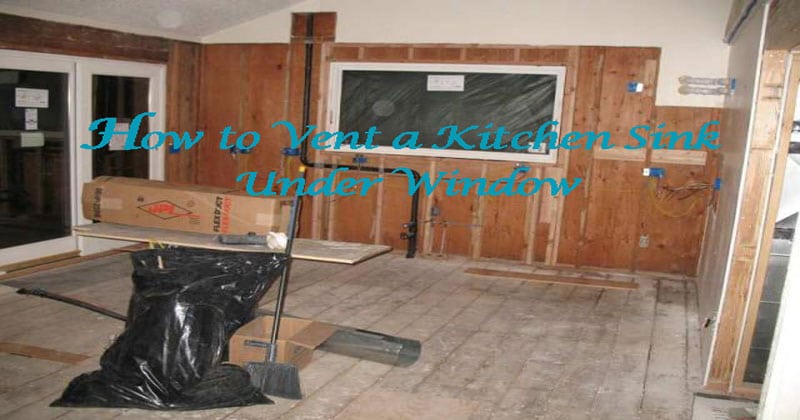 Venting a kitchen sink under a window is a relatively simple process that can be done during a kitchen renovation or when installing a new sink. It involves installing a ventilation hood or a window exhaust fan above the sink to remove odors and fumes from cooking. The ventilation system can be connected to an existing duct or vented outside through the window.
In addition to proper ventilation, it's also essential to consider the placement of other kitchen appliances and fixtures in relation to the sink and window. For example, it's best to avoid placing a stove or refrigerator directly opposite the window to prevent the buildup of heat or cold air. Consulting with a professional designer or contractor can help ensure that your kitchen sink and its ventilation system are placed in the most efficient and functional manner.
Venting a kitchen sink under a window is a relatively simple process that can be done during a kitchen renovation or when installing a new sink. It involves installing a ventilation hood or a window exhaust fan above the sink to remove odors and fumes from cooking. The ventilation system can be connected to an existing duct or vented outside through the window.
In addition to proper ventilation, it's also essential to consider the placement of other kitchen appliances and fixtures in relation to the sink and window. For example, it's best to avoid placing a stove or refrigerator directly opposite the window to prevent the buildup of heat or cold air. Consulting with a professional designer or contractor can help ensure that your kitchen sink and its ventilation system are placed in the most efficient and functional manner.
Final Thoughts
 In conclusion, venting a kitchen sink under a window is a highly beneficial option for any kitchen. It provides enhanced airflow and natural light, reduces the risk of mold and mildew growth, and improves the overall aesthetic appeal of the space. When planning your kitchen design, be sure to consider this option for a well-ventilated and visually pleasing kitchen.
In conclusion, venting a kitchen sink under a window is a highly beneficial option for any kitchen. It provides enhanced airflow and natural light, reduces the risk of mold and mildew growth, and improves the overall aesthetic appeal of the space. When planning your kitchen design, be sure to consider this option for a well-ventilated and visually pleasing kitchen.
:max_bytes(150000):strip_icc()/venting-sink-diagram-f8f9759a-1047c08369d24101b00c8340ba048950.jpg)



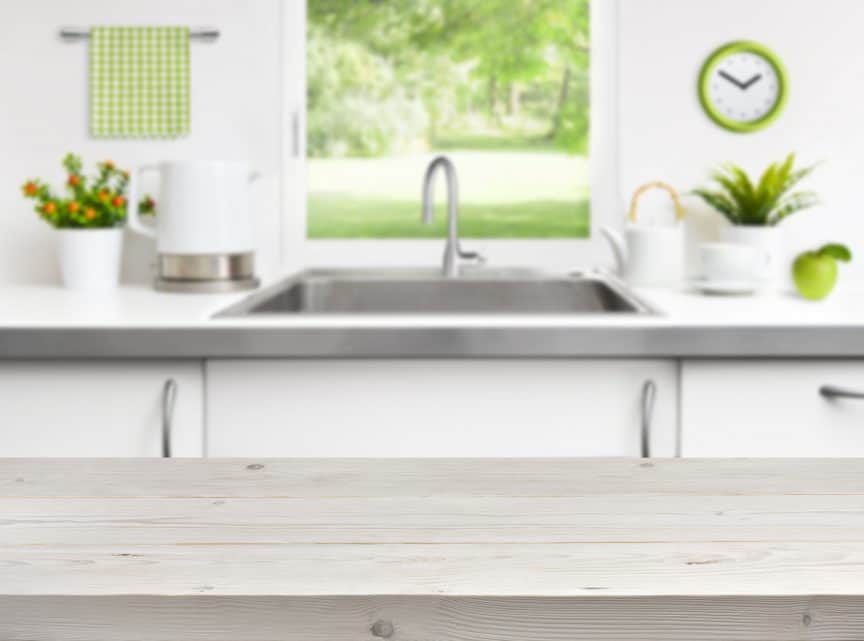
/sink-vent-installing-an-auto-vent-2718828-05-ca0dcb2915be457b9693ccd2655e6c21.jpg)







